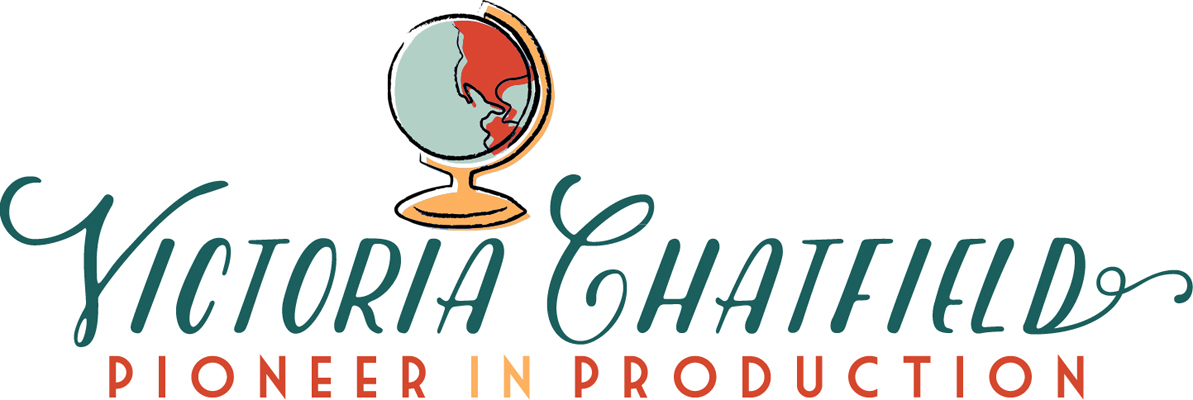Once all of the visual research images have been printed out and taped up on the walls, it's time for my students to start analyzing what they've found. For this activity, I break the students up into groups and print out a different dramaturgical article for each group. Last week, I guided the Thursday cohort, who will be designing a production of Shakespeare's The Tempest set in New Orleans circa Hurricane Katrina*, through their visual research analysis. The dramaturgical articles that I selected were about:
- Zombies and their connection to voodoo
- Profiles of the different voodoo spirts (loa)
- Hurricane Katrina's impact on New Orleans
- Mardi Gras traditions
These were all articles that tied heavily into design choices that students could make. I was particularly excited for students to connect the idea of a loa like Azaka-Tonnerre, the spirit of thunder, with Ariel, while Prospero would be the controlling bokor with the ability to summon spirits and manipulate the weather to serve his purposes. I also hoped that they'd look at the Haitian concept of the zombie, the dead slave who was forced to remain on the Hispaniola plantations forever (as opposed to finally being granted his freedom, or lan guinée), and immediately think of Caliban and his subjugation and humiliation at the hands of his captor/master. As a former reading teacher, I made sure that the articles were at least somewhat leveled -- with my X-Z readers tackling the article jam-packed with scientific facts about Hurricane Katrina and analyzing its social/economic impact on New Orleans. Meanwhile, my T-V readers worked on the article about Mardi Gras traditions, which featured chunks of text interspersed with photographs. If a student finished an article, she raised her hand, and I brought over another one (usually the high-interest zombie article). Students annotated the articles and filled out a graphic organizer, summarizing the content and listing ways that they could integrate the information into their designs.

While students were reading their dramaturgical articles, I called up small groups (of 3-4 students) to look at the visual research walls. These groups would answer the following questions on a graphic organizer:
- What are some things that you see on the visual research wall that are interesting to you? Why are they interesting?
- What colors do you notice on the visual research wall?
- Are the colors dark or light?
- Are the colors bright or dull?
- What shapes or lines do you notice on the visual research wall?
- What textures do you notice on the visual research wall?
- How might you incorporate some of the ideas on the visual research wall into your designs?

These questions help students begin crafting a "visual profile" for their production. After each group spent 4-5 minutes at the visual research wall, I brought the entire class back together to conduct an informal survey. "Are the colors dark or light? Show me one for dark, two for light." Students agreed that most of the colors were dark and dull, circles were the shape most commonly used, lines tended to zigzag (like stitches), and textures were rough (like burlap or gravel). Next week, I'll print all of those unifying properties onto a poster, so that students can refer back to them during the design process. If I see a student coloring Miranda's dress bright pink, for instance, I might ask: "Look at the poster. What do you think I'm going to say?"
"The colors are supposed to be dark and dull."
"Why did you choose to color Miranda's dress bright pink?"
This could go two different ways. If the student says "because I like pink," then he's encouraged to find a color that better matches the visual profile for the show. However, if he says "because Miranda doesn't fit into the world of the island and wants to leave," then I'll challenge him to find ways of making his choices even clearer to the audience. Can you add detailing that connects her back to the island, or indicates that she feels trapped there? (Maybe going back to those stitches up on the visual research wall?) Can you make a choice with Ferdinand's costume that shows that Miranda views him as a means of escape?
Finally, students choose a representative from their group who stands up and presents the summary of their dramaturgical research article for the entire class. The table then shares some of their ideas for how the information from their article could be integrated into our design for the show. Students at other tables are encouraged to write down their questions and comments as well; at the end of class, we have a whole-class discussion about new ideas that we've discovered (from the visual research wall and the dramaturgical research articles). Sure enough, one student suggested that they should use zombie imagery for Caliban because of their shared connection to slavery, and another student wanted to link graphic representations of loa to both Prospero and Ariel. I cannot wait to see what they come up with the coming weeks!
* Our students take an end-of-year trip to New Orleans to do community service work in neighborhoods that are still recovering from Hurricane Katrina. Tying The Tempest into their end-of-year trip will make both the production and their community service more meaningful. Can't wait for NOLA 2016!






No comments